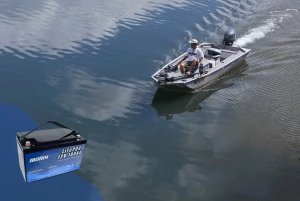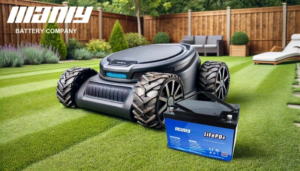2025 How Long Does a Drone Battery Last in Agriculture?
Table of Contents
- 2025 How Long Does a Drone Battery Last in Agriculture?
- Crop Monitoring: Identifying areas needing water, nutrients, or pest control.
- Precision Spraying: Distributing pesticides or fertilizers with minimal waste.
- Soil and Field Mapping: Analyzing soil health for optimized planting.
- Livestock Management: Monitoring and tracking livestock in large fields.
- Operational Efficiency: Longer flights reduce the need for frequent battery swaps, saving time during busy farming operations.
- Cost Management: Fewer replacements and lower maintenance requirements help minimize operational costs.
- Environmental Impact: Choosing durable agriculture drone batteries reduces waste and promotes sustainable practices.
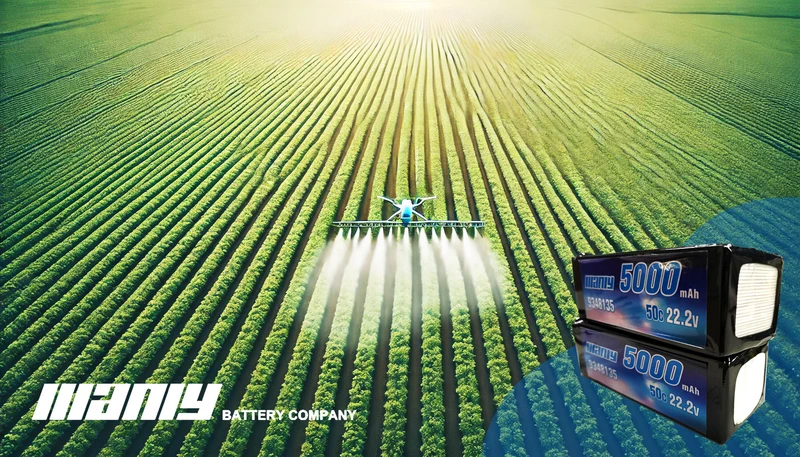
How Are Drones Used in Agriculture
Drones have transformed agriculture by improving efficiency and precision in crop monitoring, spraying, soil analysis, and livestock management. These innovative tools help farmers optimize resources and reduce costs while promoting sustainability. Below, we explore the primary applications of drones in agriculture and their numerous benefits.Primary Applications of Drones in Agriculture
1. Crop Health MonitoringDrones equipped with high-resolution cameras and sensors provide real-time data on crop health. They can identify areas affected by pests, diseases, or water stress before the issues become widespread. By analyzing these insights, farmers can make informed decisions, reduce waste, and improve yields.- Example: A drone captures daily images of a 400-acre field, highlighting areas needing irrigation or pest control.
- Benefits:
- Reduces waste by targeting specific areas.
- Saves time compared to manual spraying.
- Decreases chemical runoff, protecting nearby water sources.
- Key Metrics Collected:
- Soil pH levels.
- Moisture content.
- Nutrient composition.
- Example: A drone monitors a herd of cattle across a large ranch, identifying strays or injured animals quickly.
Benefits of Drones in Agriculture
- Increased Efficiency: Drones complete tasks like spraying and mapping in a fraction of the time required by traditional methods.
- Cost Savings: By reducing labor needs and minimizing resource waste, drones lower overall operational costs.
- Environmental Sustainability: Precision applications reduce chemical use and environmental impact, leading to healthier soil and cleaner water sources.
- Enhanced Crop Yields: Real-time data helps farmers make proactive decisions, resulting in healthier crops and higher yields.
- Scalability: Drones are suitable for small farms and large-scale agricultural operations, making them versatile tools for farmers worldwide.
The Role of the Agriculture Drone Battery
The efficiency of agricultural drones depends significantly on the quality and lifespan of the agriculture drone battery. Reliable batteries ensure that drones can complete critical tasks without frequent interruptions. Selecting the right battery and following best practices for charging a drone battery can maximize performance and longevity.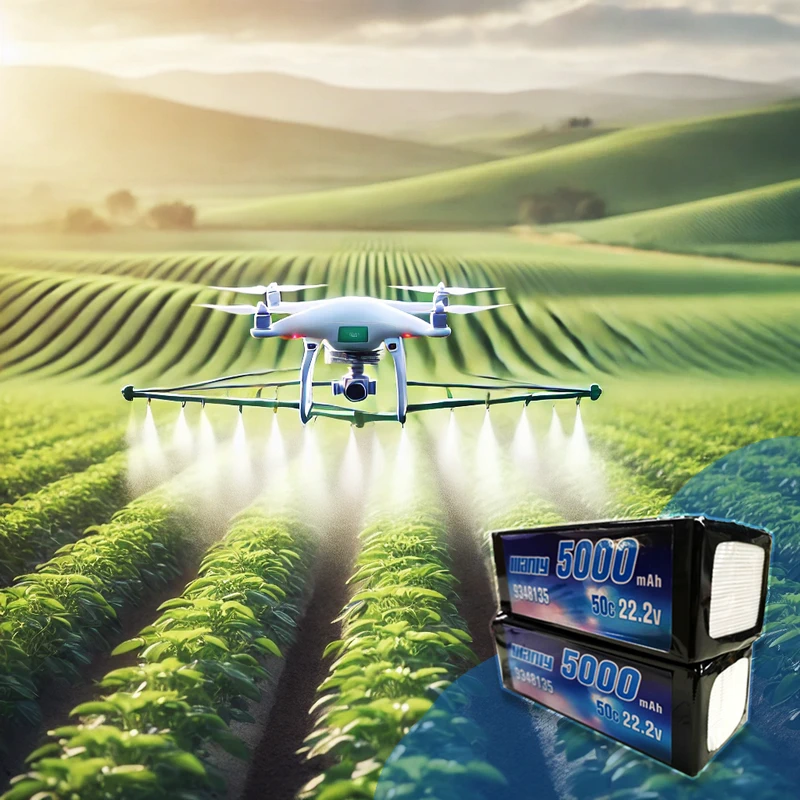
What Kind of Battery Is Used in Drones?
The type of drone battery used directly impacts the drone's performance, flight time, and safety. Most drones rely on advanced batteries like Lithium Polymer (LiPo) or Lithium-ion, with newer technologies such as solid-state batteries gaining attention. Below, we explore the most common types of drone batteries, comparing their features, advantages, and suitability for agricultural applications.1. Lithium Polymer (LiPo) Batteries
LiPo batteries are the most popular choice for drones due to their lightweight design and high energy density.- Advantages:
- Long flight durations.
- High discharge rates for powerful drone performance.
- Lightweight, making them ideal for agriculture drones carrying heavy payloads.
- Drawbacks:
- Requires careful handling; improper use may lead to overheating or fire.
- Shorter lifespan compared to some alternatives.
2. Lithium-ion Batteries
Lithium-ion batteries are heavier than LiPo batteries but offer greater stability and safety.- Advantages:
- Longer lifespan and more charge cycles.
- Lower risk of overheating during charging a drone battery.
- Drawbacks:
- Heavier, which may reduce flight time.
- Lower discharge rates, making them less suitable for high-performance tasks.
3. Solid-State Batteries
Solid-state batteries represent emerging technology in drone applications. They replace liquid electrolytes with solid materials, offering improved energy density and safety.- Advantages:
- Significantly longer flight times due to higher energy storage.
- Enhanced safety features, reducing the risk of overheating or fire.
- Drawbacks:
- Still in developmental stages; not widely available for drones.
- Higher costs compared to LiPo and lithium-ion batteries.
4. Older Battery Technologies
While less common in modern drones, older battery types like Nickel-Metal Hydride (NiMH) and Nickel-Cadmium (NiCd) are still worth mentioning:- NiMH Batteries:
- Safer and more environmentally friendly than LiPo or Li-ion.
- Heavier and offer lower energy density, resulting in shorter drone battery life.
- NiCd Batteries:
- Extremely durable and capable of operating in extreme temperatures.
- Prone to "memory effect," which reduces capacity over time.
Performance Comparison for Agriculture
| Battery Type | Energy Density | Weight | Safety | Lifespan | Suitability for Agriculture |
|---|---|---|---|---|---|
| LiPo | High | Light | Moderate | Short | Excellent for high-power tasks |
| Lithium-ion | Moderate | Heavy | High | Long | Ideal for monitoring and surveying |
| Solid-State | Very High | Light | Very High | Very Long | Promising for future applications |
| NiMH/NiCd | Low | Heavy | Moderate | Moderate | Limited use in modern drones |
Environmental Considerations
Agriculture often exposes drones to harsh conditions, including high temperatures and humidity. LiPo batteries are sensitive to these factors and require careful storage and maintenance, while lithium-ion batteries provide greater resilience. Solid-state batteries, once commercialized, could further enhance durability in extreme environments.Selecting the right drone battery is critical for maximizing performance and safety in agricultural operations. By understanding the strengths and limitations of different types of drone batteries, farmers can ensure efficient and reliable drone use across a variety of tasks.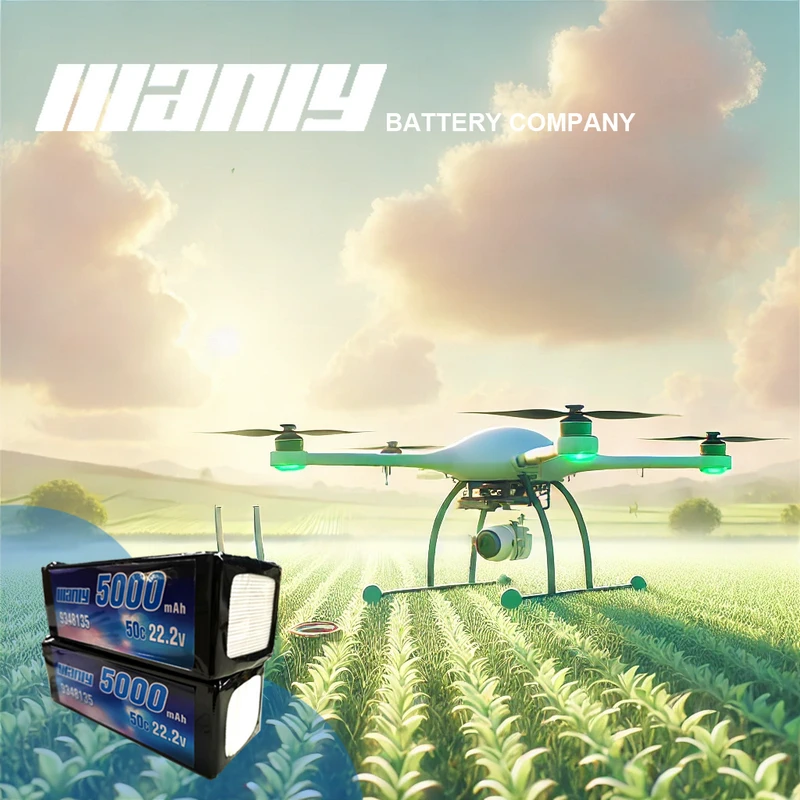
How to Select a Drone Battery?
Selecting the right drone battery is critical for maximizing your drone's performance and ensuring its safe operation. The choice depends on factors like flight time, weight, compatibility, and durability. Below, we break down key considerations to help you make an informed decision.Key Considerations for Choosing a Drone Battery
1. Flight Time and Battery CapacityThe battery capacity, measured in milliampere-hours (mAh), directly affects drone battery life. A higher capacity generally means longer flight times, but it also increases the battery's weight. For agricultural drones, where tasks like spraying and mapping require extended operations, prioritize batteries with high capacities that balance energy needs and payload efficiency.- Example: A drone battery with a capacity of 5,000mAh may support flights of 20–30 minutes, depending on the payload and environmental conditions.
- Tip: Look for lightweight batteries with high energy density, such as Lithium Polymer (LiPo) batteries, to optimize performance without sacrificing flight time.
- Recommendation: Always check your drone's specifications and ensure the drone battery matches its voltage, capacity, and connector type.
- High-quality agriculture drone batteries often include safety features like overcharge protection, thermal management, and enhanced cycle life.
- Voltage Ratings: Ensure the voltage aligns with your drone's motor requirements to avoid inefficiencies.
- C-Rating (Discharge Rate): A higher C-rating supports more demanding tasks like spraying but may add weight.
- Connectors: Common types like XT60 or EC3 are versatile and widely compatible.
Additional Tips for Selecting a Drone Battery
- Safety First: Choose batteries with built-in safety circuits to prevent overcharging, overheating, or short circuits.
- Environmental Suitability: For outdoor operations, such as agriculture, select batteries designed to withstand temperature extremes and humidity.
- Ease of Maintenance: Some drone battery models come with monitoring features to track health and charge cycles, simplifying maintenance.
How Do You Charge a Drone Battery?
Properly charging a drone battery is essential to maximize its performance, lifespan, and safety. Using the correct charger, monitoring the charging process, and following safety protocols can prevent common issues like overheating or reduced battery capacity. Below are key methods and best practices.1. Recommended Chargers and AdaptersUsing the correct charger ensures your drone battery charges efficiently without risks.- Manufacturer-Approved Chargers: Always use chargers designed for your specific agriculture drone battery type (e.g., LiPo or Lithium-ion). Generic chargers may not provide the correct voltage or safety features.
- Multi-Chargers: If you need to charge multiple batteries, invest in a multi-charger designed to handle multiple ports safely.
- Portable Options: For field operations, consider portable charging stations or solar-powered chargers for uninterrupted workflow.
- Overcharging: Leaving the battery on the charger after it’s fully charged can degrade its lifespan. Modern chargers often have auto-shutoff features to prevent this.
- Using Damaged Batteries: Never charge a swollen or visibly damaged drone battery, as this can lead to overheating or fires.
- Incompatible Chargers: Using chargers with mismatched voltage or connectors can damage the battery and reduce performance.
- Monitor the Process: Never leave a charging battery unattended. Regularly check for abnormal heat or swelling.
- Charge in a Safe Location: Use a well-ventilated, fireproof area. LiPo bags or fireproof containers add an extra layer of safety for charging a drone battery.
- Temperature Control: Avoid charging in extreme heat or cold, as this can compromise the battery's integrity.
- Cool Down Before Charging: Let the battery cool for 10–15 minutes after use before connecting it to a charger.
- Balanced Charging for LiPo Batteries: Use balance charging to ensure all cells are charged evenly, preventing long-term issues.
- Storage Voltage: If not in use for an extended period, discharge the battery to about 50% and store it at the recommended temperature and humidity levels.
How Long Does It Take to Charge a Drone Battery?
The time required for charging a drone battery depends on its type, capacity, and the charging method used. On average, it can take anywhere from 30 minutes to several hours. Here’s what influences charging time:1. Battery Type and CapacityThe type of drone battery plays a significant role in charging times:- LiPo Batteries: These typically charge faster due to higher energy density, requiring 1–2 hours on average.
- Lithium-ion Batteries: Slightly slower, taking 2–3 hours for larger capacities.
- High-Capacity Agriculture Drone Batteries: Batteries used for agricultural drones often have larger capacities (e.g., 5,000mAh or more), which may extend charging times.
- Standard Chargers: These operate at moderate speeds, ensuring a safe, steady charge to maintain battery health.
- Fast Chargers: These reduce charging times significantly but may lead to quicker wear and tear on the battery over time. Use fast charging sparingly for emergencies.
| Battery Type | Capacity | Charging Time | Charging Method |
|---|---|---|---|
| LiPo Battery | 5,000mAh | ~1–1.5 hours | Standard |
| Lithium-ion Battery | 6,000mAh | ~2–3 hours | Standard |
| High-Capacity LiPo | 10,000mAh | ~3 hours | Fast/Portable Charger |
- Rotate Batteries: Use multiple batteries and alternate charging cycles to avoid downtime.
- Portable Chargers for Fieldwork: Solar-powered or mobile charging stations can keep operations running smoothly in remote locations.
- Pre-Charge Before Field Use: Always charge batteries to full capacity before heading to the field to maximize flight time.
Tips for Extending Drone Battery Life
Extending drone battery life is essential for maximizing flight time, reducing costs, and ensuring safe operations. Proper care, storage, and usage habits can significantly improve the lifespan of your drone battery, especially for demanding applications like agriculture. Below are practical tips to maintain optimal battery performance.1. Storing Batteries CorrectlyProper storage conditions are crucial for preserving drone battery health.- Temperature Control: Store batteries in a cool, dry place, ideally between 59°F and 77°F (15°C–25°C). Avoid exposing them to extreme heat or cold, which can degrade battery performance over time.
- Humidity Management: Ensure the storage area has low humidity to prevent moisture from damaging internal components.
- Storage Voltage: For long-term storage, keep the battery charged to around 50% capacity to reduce stress on the cells.
- Prevent Deep Discharges: Avoid letting the battery level drop below 20%. Deep discharges strain the cells and shorten their lifespan.
- Remove Once Fully Charged: Do not leave the battery on the charger after it reaches 100%. Overcharging can generate heat and reduce capacity over time.
- Use a Balance Charger: For LiPo batteries, a balance charger ensures each cell charges evenly, minimizing risks of imbalance that could shorten the battery's life.
- Visual Inspection: Look for physical damage, swelling, or corrosion around connectors. Damaged batteries should be replaced immediately to avoid potential hazards.
- Cycle Count Monitoring: Many modern batteries track their charge cycles. Replace the battery when it approaches the manufacturer’s recommended cycle limit.
- Clean Connectors: Dirty connectors can cause inefficiencies or even short circuits. Use a dry cloth to clean connectors regularly.
- Advanced Materials: Premium batteries often use better-quality materials, offering higher energy density and longer life cycles.
- Enhanced Safety Features: Look for batteries with built-in overcharge, overheat, and short-circuit protection for safer operation.
- Brand Compatibility: Use batteries designed for your drone model to ensure optimal compatibility and performance.
Best Practices for Daily Operations
- Cool Down Before Charging: Let batteries cool for 10–15 minutes after use before plugging them in to prevent overheating.
- Optimize Flight Conditions: Fly in mild weather to reduce the power required for stabilization. Avoid strong winds or extreme temperatures.
- Lighten the Payload: Remove unnecessary accessories like propeller guards or lens filters to reduce energy consumption.
Final Thoughts
By following these tips, you can significantly extend the drone battery life and enhance the efficiency of your operations. Proper care not only saves money but also ensures consistent performance for critical tasks, whether it’s monitoring crops or spraying fields. Let me know if you need further clarifications or additional details!Conclusion
The drone battery is the backbone of any agricultural drone's performance, directly influencing its flight duration, efficiency, and reliability. From monitoring crop health to performing precision spraying, drones play a critical role in modern farming, and their effectiveness hinges on the quality and care of the agriculture drone battery.Key Takeaways- Selecting the Right Battery: Choosing a battery that matches your drone's specifications ensures optimal performance. Factors such as capacity, weight, and compatibility are essential to support demanding agricultural tasks.
- Reliable Manufacturers: Investing in high-quality agriculture drone batteries from reputable manufacturers reduces risks of malfunction, enhances safety, and improves overall efficiency.
- Proper Maintenance: Following best practices, such as avoiding overcharging, storing batteries at appropriate temperatures, and conducting regular inspections, prolongs drone battery life and reduces replacement costs.

